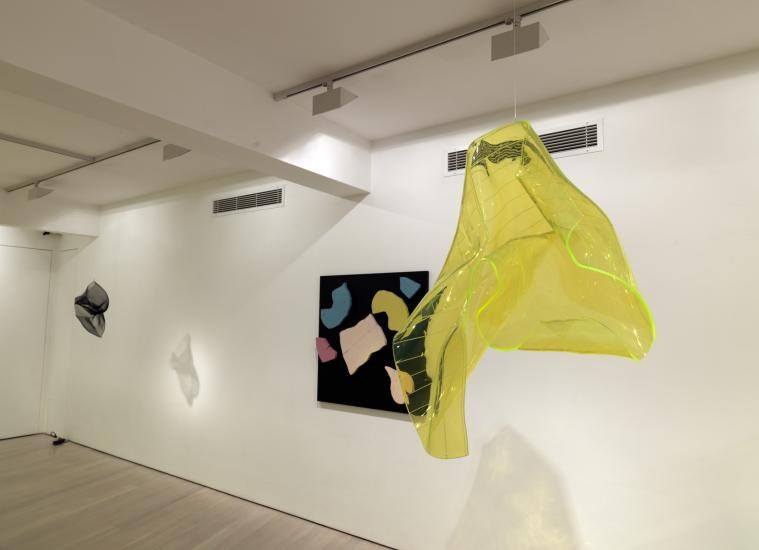Katsuhiro Yamaguchi
11 Sep - 26 Oct 2013
KATSUHIRO YAMAGUCHI
Imaginarium
11 September – 26 October 2013
The 1950s were a significant period in Japan for experimental art. This was the decade when the Experimental Workshop was founded by the critic Shuzo Takiguchi. Yamaguchi was one of the founder members. The group’s uniting principle was to treat experiment as if it were as important in art as it is in science. Their activities involved all available media, and some of their memorable works included performance, stage design, photography, light sculptures, concerts, and slide and sound presentations.
Like the other members of the Experimental Workshop, Katsuhiro Yamaguchi had no conventional art education. Today, members of the group, Yamaguchi, Toru Takemitsu and Joji Yuasa are seen as kingpins in their respective fields, but in 1951 the group had no workshop, and had to improvise in whatever space they could find.
What is important about the ethos embodied in the Experimental Workshop is that although it lasted only for eight years, it has remained highly influential for Japanese art of today. Already in the early 1950s, Yamaguchi wanted the viewer to interact, even involuntarily, with the works of art he or she was looking at. The works look different from every angle and under different lighting. They are not stable. Hanging sculptures might rotate. Magnetic reliefs can be repositioned. The reliefs, which he calls ‘vitrines’, reflect the viewers moving in front of them and appear to change in front of our eyes. In Yamaguchi’s work, what we see can never be repeated precisely.
Imaginarium
11 September – 26 October 2013
The 1950s were a significant period in Japan for experimental art. This was the decade when the Experimental Workshop was founded by the critic Shuzo Takiguchi. Yamaguchi was one of the founder members. The group’s uniting principle was to treat experiment as if it were as important in art as it is in science. Their activities involved all available media, and some of their memorable works included performance, stage design, photography, light sculptures, concerts, and slide and sound presentations.
Like the other members of the Experimental Workshop, Katsuhiro Yamaguchi had no conventional art education. Today, members of the group, Yamaguchi, Toru Takemitsu and Joji Yuasa are seen as kingpins in their respective fields, but in 1951 the group had no workshop, and had to improvise in whatever space they could find.
What is important about the ethos embodied in the Experimental Workshop is that although it lasted only for eight years, it has remained highly influential for Japanese art of today. Already in the early 1950s, Yamaguchi wanted the viewer to interact, even involuntarily, with the works of art he or she was looking at. The works look different from every angle and under different lighting. They are not stable. Hanging sculptures might rotate. Magnetic reliefs can be repositioned. The reliefs, which he calls ‘vitrines’, reflect the viewers moving in front of them and appear to change in front of our eyes. In Yamaguchi’s work, what we see can never be repeated precisely.

